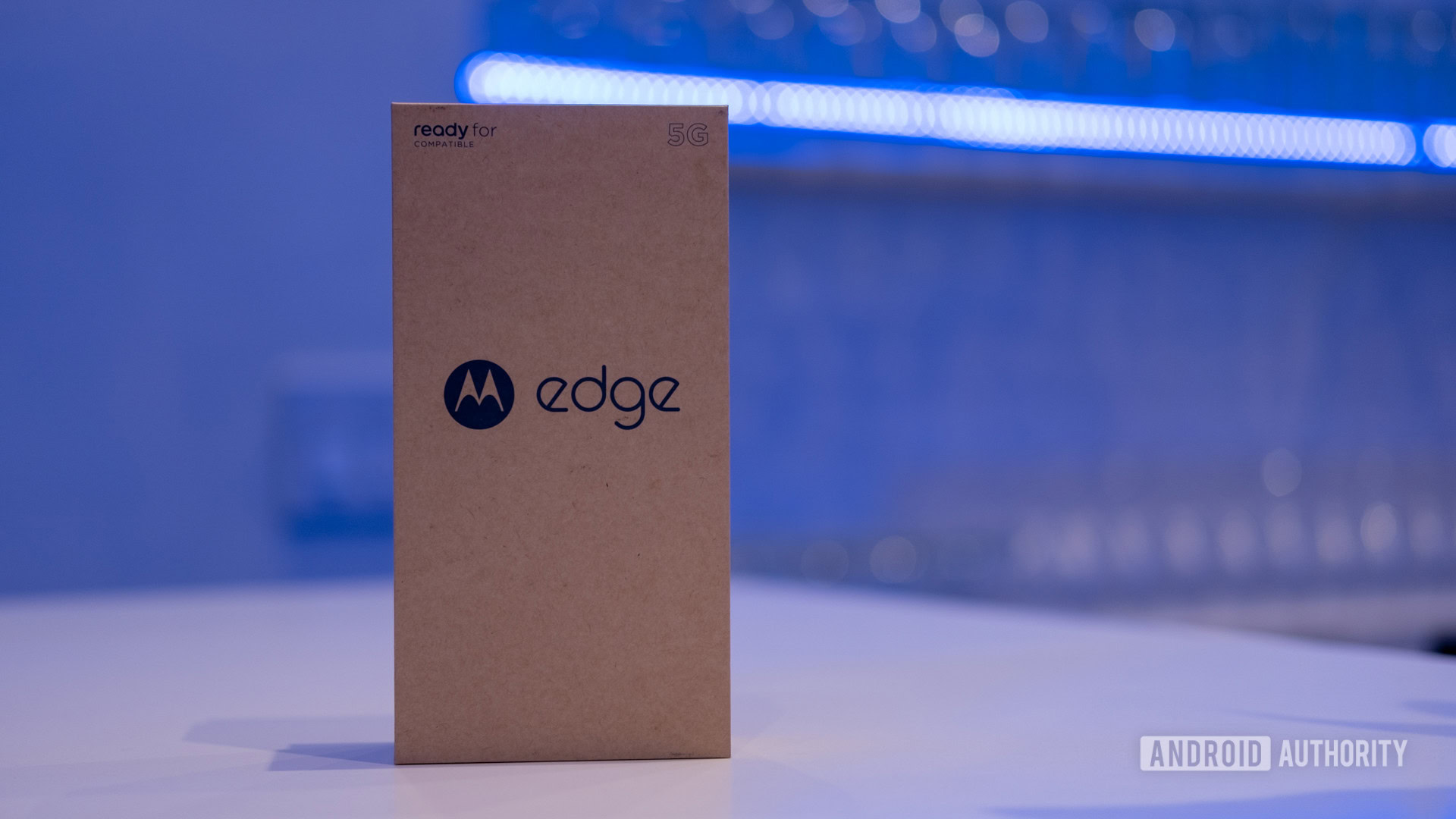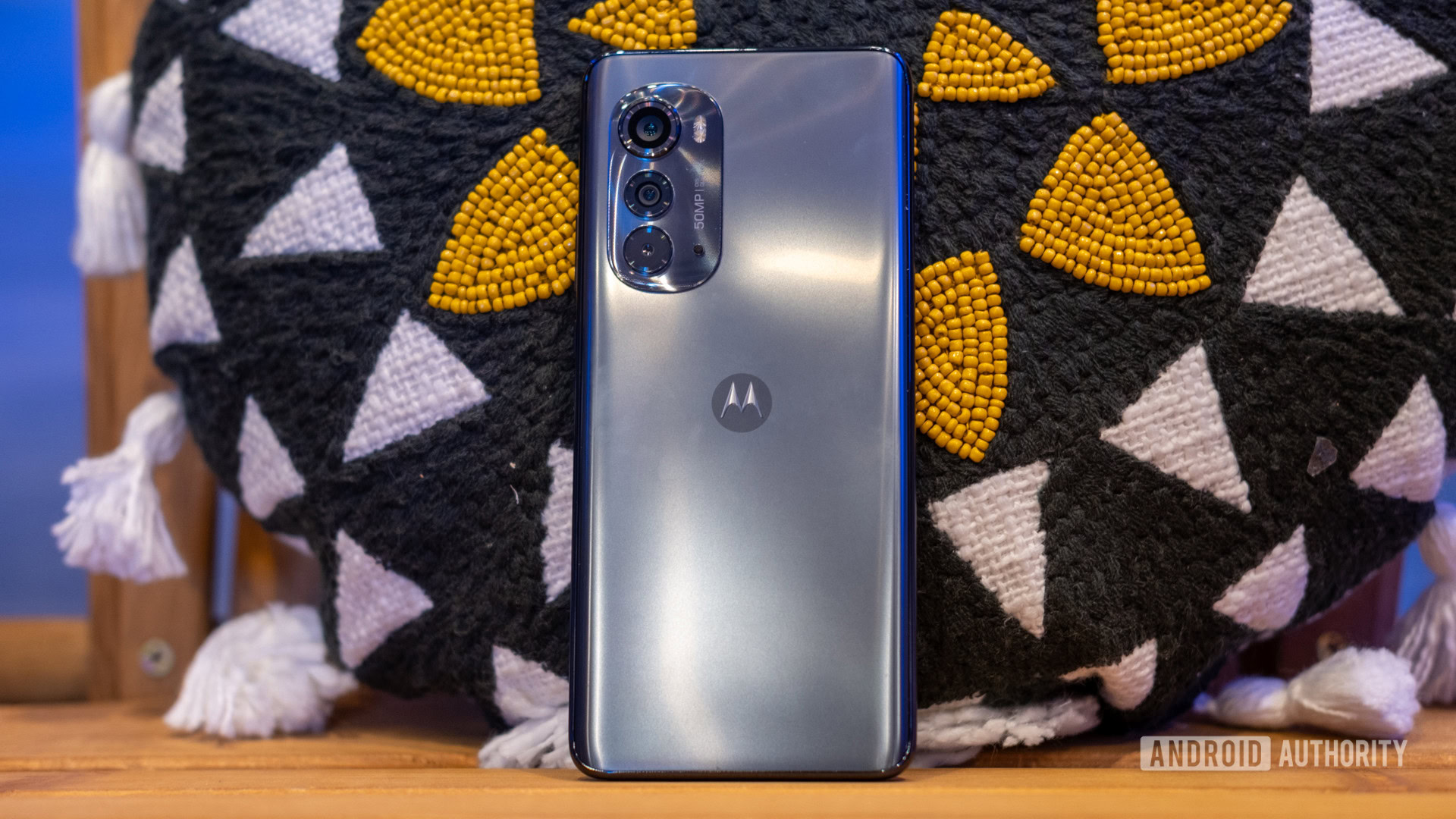Affiliate links on Android Authority may earn us a commission. Learn more.
Daily Authority: 📱 Moto's cutting Edge midranger

🐕 Happy Friday everyone! Yesterday my dog pulled a muscle while we were out on a walk, which I didn’t even know was a thing. Apparently we’re both getting old…
Motorola Edge, now with mmWave

Motorola doesn’t make as much of a splash as it has in the past, but yesterday the company announced a new midrange Edge with the potential to make some headway in the US market.
- The Motorola Edge 2022 keeps the same speedy 144Hz refresh rate as the 2021 model, but in an upgraded OLED panel with HDR10+ support.
- One of our main criticisms of the last model was the dim display, so this is a welcome upgrade.
- Another welcome upgrade is the cameras. It features a 50MP main sensor and 13MP ultrawide.
- That’s fewer megapixels than the last model, but the sensor itself is still an upgrade. It has OIS and all-pixel PDAF, meaning that it will focus much faster and produce sharper images.
- Other notable upgrades are wireless and reverse wireless charging, stereo speakers, and a more compact build.
But perhaps the most notable change is the chipset: it uses the new MediaTek Dimensity 1050. This is the first phone in the US to use this processor, and its killer feature is mmWave 5G support. Here’s my colleague and MediaTek-spert Hadlee Simons’ take:
- The use of the MediaTek Dimensity 1050 is pretty interesting for the Motorola Edge 2022.
- It’s the first MediaTek chipset to support mmWave 5G, after years of the company’s silicon only supporting sub-6Ghz 5G connectivity.
- And as we know, all the major US carriers support mmWave, with Verizon touting it the most.
- So it’s a pretty big deal for MediaTek and its US ambitions. But what does this mean for the average consumer?
- Well, the Dimensity 1050 seems to be more in line with older silicon like the Snapdragon 765 series. That means a mid-tier CPU (2x Cortex-A78 and 6x Cortex-A55), a respectable mid-range GPU, and a 6nm TSMC design.
- By comparison, the Edge 2021 used a Snapdragon 778G chipset with a 6nm design and a more impressive CPU (4x Cortex-A78 plus 4x Cortex-A55).In other words, the new phone is a downgrade in one notable way on paper.
- But you likely won’t notice this unless you really hammer the phone with advanced tasks.
Full disclosure: the previous model also had mmWave 5G support, but only with Verizon. The new model supports it across the board, including the unlocked model. Here’s what you need to know about pricing and availability:
- The phone will go on sale “in the coming weeks” in the US, and “in the coming months” in Canada.
- At launch, it will start at $499 (unlocked), which is a full $200 cheaper than the last model.
- Even better, it will temporarily be free at T-Mobile with a new activation. Later it will come to AT&T, Verizon, Spectrum Mobile, UScellular, and Visible.
- Will it be enough to win over budget-conscious shoppers in the US, where the Pixel 6a and Samsung reign supreme? Stay tuned for our review to find out.
Roundup
⌚ An app teardown indicates that the Pixel Watch could be Google Fi’s first supported smartwatch (Android Authority).
🏭 TSMC to start 3nm chip production for M2 Pro. Other manufacturers will start using TSMC’s 3nm chips late next year (9to5mac).
🚁 RIP Pixy: Snap gave up on its selfie drone so fast it’ll make your head spin (Android Authority). But don’t worry, there are far better mini drones (Drone Rush).
🕵️ A tool that monitors how long kids are in the bathroom is now in 1,000 American schools. One step forward, two steps back (Vice).
🚗 One more time for the people in the back(seat): Evidence supports that cars should have physical buttons, not just screens (Android Authority).
🚫 Code in the iPhone app reveals that Netflix’s upcoming ad tier might not let you download shows (Gizmodo).
👑 Meanwhile, streaming takes cable’s throne for the first time in the US (Android Authority).
💸 Crypto.com laid off 260 employees — then quietly let go of hundreds more as the market slumps (The Verge).
🏔️ Kilimanjaro gets high-speed internet so climbers can tweet or Instagram ascent. Also, you know, calling for help (The Guardian).
🛰️ Europe is seriously considering a major investment in space-based solar power (Arstechnica).
Friday fun

For those of you above a certain age, you’ll remember the groundbreaking music video for Janet Jackson’s Rhythm Nation, with slick military uniforms and killer choreography that went on to earn it a Grammy award in 1990. Apparently, the video wasn’t just groundbreaking, it also broke hard drives in laptops.
A recent devblogs blog post by Microsoft’s Raymond Chen (via Windows Central) told the story of a major computer manufacturer investigating why exactly this particular music video caused its computers to crash. During the investigation, they discovered that not only does it cause the computer playing the video to crash, but it also broke nearby laptops as well.
It turns out that the song played the natural resonance frequency for the brand of 5,400rpm hard drives used by the company and its competitors. Resonance frequencies cause an object to vibrate, which you may have seen in movies as glass shattering.
The workaround was a simple software fix to prevent devices from emitting that frequency during playback. It’s entirely possible that the filter is still in place today, although few remember why.
Keep dancing,
Nick Fernandez, Editor.